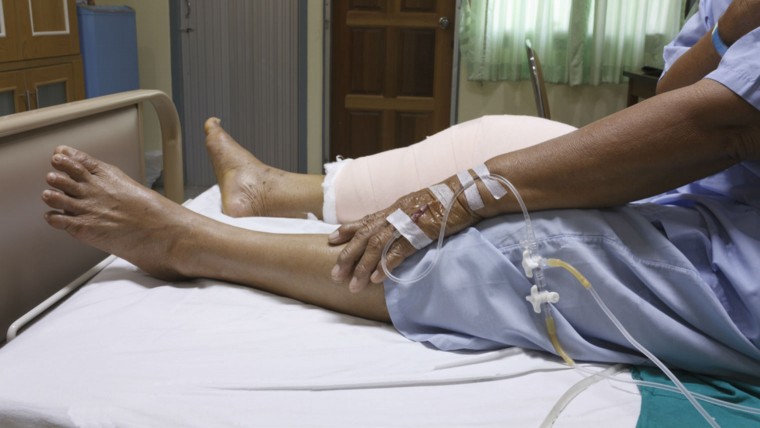Latest statistics from the Health and Social Care Information Centre show that the number of people attending A&E units with sports injuries has jumped by 15 per cent a year in recent years with around 400,000 cases treated annually.
Such is the demand on medical professionals that the last two decades have seen a corresponding rise in research looking at how best to rehabilitate from exercise-induced pain. And although many of the studies have arisen from research conducted on elite athletes, the findings are now being used to treat the rank and file.
John Brewer is professor of sport at St Mary’s University, Twickenham, and previously worked as head of the Football Association’s injury rehabilitation centre in Lilleshall, Shropshire. He says the science of sports rehab has gathered pace and there are now several university departments around the country looking into cutting-edge developments.
“One of the key messages that has really filtered down to everyday exercises is how crucial rest and recovery coupled with treatment are if you want to get back to where you left off in sport,” says Professor Brewer.
Many muscular and soft-tissue injuries make it difficult for an injured person to exercise. As a result cardiovascular fitness can quickly deteriorate making it much harder to return to full fitness.
“Work with elite athletes has shown how a range of approaches during a rehab period, which could include deep-water running, cycling, swimming and anti-gravity treadmills, will elevate heart rate and provide an aerobic challenge so that fitness doesn’t plummet,” says Professor Brewer. “A lot of physiotherapists now prescribe such methods, whereas they were unheard of outside top-level sport five years ago.”
Sammy Margo, of the Chartered Society of Physiotherapists, who has treated injured sports people of all levels, says general awareness of what the body needs to stay fit and healthy is much improved. “The fitness industry has taken on board the messages from rehabilitation experts so you see a lot more Pilates and conditioning workouts on gym timetables, as well as more prescribed recovery periods, all of which can lessen injury risk,” he says.
CHRONIC PAIN
When it comes to more chronic exercise-related problems, such as joint pain, the gap in treatment approaches between elite and Joe Jogger is also being narrowed. More than 90,000 hip replacements and 70,000 knee replacements are carried out in England and Wales every year, with experts predicting those figures could escalate by as much as 20 per cent by 2017. Obesity and old age remain the biggest risk factors, but experts also believe joint overuse among the gym generation and top sports people are crucial factors in the upward trend.
It is a problem which led to the opening of the Arthritis Research UK Centre for Sport, Exercise and Osteoarthritis last year, a £3-million venture and the first of its kind in Europe that combines the expertise of specialists in sports medicine and osteoarthritis at the Universities of Oxford and Nottingham.
“We know that acute injuries in, say, skiing and rugby can cause joint problems in later life,” says Professor Mark Batt, consultant in sport and exercise medicine at Nottingham University Hospitals and director of the new centre. “And that the chronic jumping and twisting in sports such as football and hockey can predispose some people to osteoarthritis. But it’s a complex issue. The outcome is not the same for everyone. We want to find out why and to develop approaches that can help people across the board.”
Joint overuse among the gym generation and top sports people are crucial factors in the upward trend of hip and knee replacements
So what does the future hold? Leanne Griffiths, head of sports rehabilitation studies at St Mary’s University says “prehabilitation” is an emerging area of focus. “It’s a means of preventing injuries through extensive and regular screening,” she says. “We use in-depth biomechanical and functional movement analysis to determine if someone has underlying physical weaknesses so that we can prescribe the appropriate therapies and exercise programmes to avoid future problems.”
It is, she says, undoubtedly a concept that will attract greater commercial interest over the next decade as recreational athletes look to extend their active years. “Sports rehab methods are being employed by the NHS to help returning service personnel and in-patients undergoing cardiac rehab,” she says. “Jobs are arising in the NHS for sports rehabilitation specialists. It’s gaining huge respect.”

